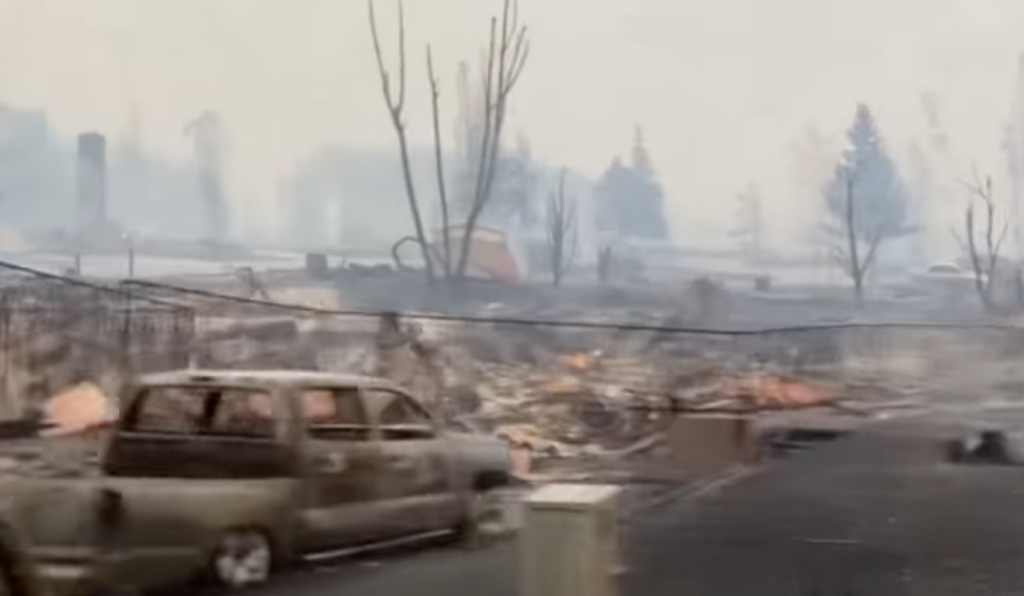Dead trees ravaged by the mountain pine beetle in Jasper National Park may have been a factor to the devastating blaze that destroyed hundreds of homes, say forest scientists, but ultimately they were not as pivotal as the high winds, hot temperatures and overall dry conditions.
“You’re going to get a high intensity crown fire under those conditions, with or without mountain-pine-beetle kill,” said Jen Beverly, an associate professor at the University of Alberta.
Beverly said trees attacked by mountain pine beetle become most flammable a year or so afterward, but less so after the needles fall and the tree dies. She said even a healthy forest without dead trees would likely have been consumed by this week’s fire.
“When you have extreme wind conditions driving a fire in an area with continuous fuels, there’s very little you can do to stop that,” she said.
The forests in the national park have been ravaged by mountain pine beetles over the last 20 years. The insects leave pine trees dead, dried out and turning red all over the landscape. At the peak of the scourge, it was estimated the beetles had reached 98 per cent of the park, but in 2019 a cold snap killed off almost all of the beetles.
